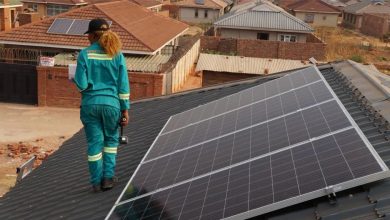Renewable Energy Systems: A Case Study

In the quest for sustainable development, Zimbabwe has embarked on a journey to enhance energy efficiency. This is by focusing on renewable energy systems. Therefore, this article will delve into a case study that highlights energy efficiency in Zimbabwe. This will shed light on its environmental and economic impact.
Energy Efficiency in Zimbabwe: A Beacon of Hope
Zimbabwe’s renewable energy sector has shown promising growth, with a particular emphasis on photovoltaic (PV) and wind energy systems. A study by Al-Ghussain et al. 3 provides a techno-economic comparative analysis of these systems. It reveals their potential to significantly reduce the country’s reliance on fossil fuels. Furthermore, the study found that Zimbabwe’s standalone PV system had a low levelized cost of energy (LCOE) of 0.10 USD/kWh. This indicates its economic viability. Moreover, the hybrid PV/Wind-Battery system demonstrated an even lower LCOE of 0.10 USD/kWh. Further underscoring the feasibility of combining renewable energy sources.
Environmental Impact of Renewable Energy
Additionally, the shift towards renewable energy in Zimbabwe is not just about economic benefits; it also has profound environmental implications. By reducing reliance on fossil fuels, these projects help mitigate greenhouse gas emissions, contributing to the fight against climate change. The use of PV and wind energy systems lowers carbon footprints. It also promotes the conservation of natural resources. These include water and land, which are crucial for the country’s agricultural sector.
Renewable Energy: Economic Benefits
Moreover, economically, the renewable energy projects in Zimbabwe offer a sustainable pathway towards energy independence and economic growth. The low LCOE of the PV and hybrid systems indicates that these technologies can provide cost-effective energy solutions. Furthermore, the study by Al-Ghussain et al. 3 suggests that these systems can generate a positive net present value (NPV), indicating their long-term economic viability. The potential for job creation in the renewable energy sector is also significant, offering a boost to Zimbabwe’s economy.
Conclusion
Energy efficiency in Zimbabwe is a multifaceted issue that requires a comprehensive approach, integrating technological advancements with economic and environmental considerations. The case study of renewable energy systems in Zimbabwe serves as a testament to the country’s commitment to sustainable development. By harnessing the power of the sun and wind, Zimbabwe is not only reducing its carbon footprint but also paving the way for a prosperous and sustainable future.
In conclusion, the journey towards energy efficiency in Zimbabwe is a promising one, with renewable energy systems playing a pivotal role. As the country continues to explore and implement these technologies, it is poised to reap the benefits of a cleaner, greener, and more economically robust future.




